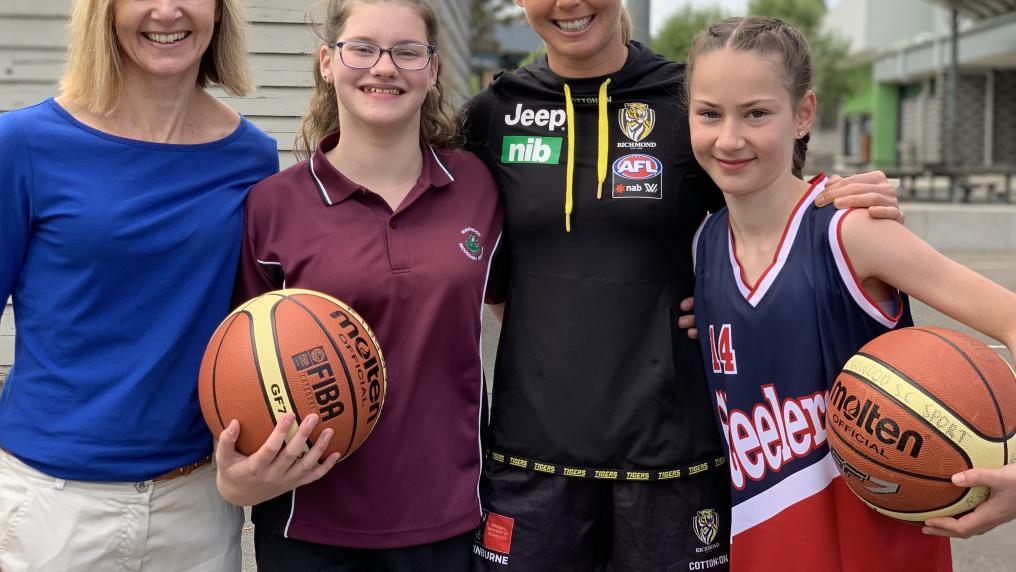Uniform agreement – it’s time to change sport uniforms

A national study examines the role that uniforms play in increasing the confidence of girls and young women to participate in sport and physical activity.
Findings have been translated into practical action and an infographic (PDF, 612.63 KB) to assist school and sport sectors develop policies and practices focused on making girls feel comfortable and confident in their uniforms to play sport and be physically active.
The study was conducted by a research team focused on ‘no barriers for girls and women in sport', led by VU’s Susan Alberti Women in Sport Chair Professor Clare Hanlon (Institute for Health and Sport). It expands on the Victorian study that was a collaboration with School Sport Victoria and funded by the Change Our Game, Office for Women in Sport and Recreation.
These findings are for the benefit of girls in Australia to enable them to feel comfortable, confident and ready to play sport. Uniforms need to be designed for girls that are the right colour and fit, and are functional,” said Professor Hanlon.
Girls and young women aged 12 to 18 years in rural, regional and metropolitan regions throughout Australia completed the survey. Findings identified Australian girls everywhere shared similar views on uniforms: they want function over fashion; breathable stretchy material; and dark colours for any shorts, skirts or pants. They also prefer t-shirts and shorts over skirts. Having a choice is vital, especially for girls aged 12 to 14.
I am so sick of having to wear ‘unisex’ sport shorts that we all know were designed for boys, not girls. They are totally unsuitable for girls who have hips,” one participant said.
The study also highlights varying preferences state-to-state. Girls and young women from the Northern Territory are 16% less likely to prefer wearing tracksuit pants or leggings, while in Western Australia 53% are less likely to prefer wearing singlets for sport outside school, compared with girls from Victoria (63%) and NSW (72%).
The findings provide valuable insights into adolescent girls’ views on what aspects of sport uniforms make them feel confident and comfortable to play sport. In summary, girls and young women want:
- uniforms that make them feel ready for sport
- clothing that fits them well
- dark coloured shorts/skirts/pants
- uniforms made from appropriate materials
- no unisex clothing
- options that do not make them feel over-exposed.
The research highlights that the type of sports uniforms available to girls when deciding to play sport is a critical factor in making them feel confident about being active.
VU’s Women in Sport is strongly embedded in the VU Sport Strategy, committed to advancing women and girls in sport and physical activity.
See the Uniforms that encourage girls to play sport and be physically active report
Committed to planetary health & the UN SDGs
VU invested in this research as part of our whole of university commitment to being a champion of planetary health. This commitment guides our contribution to advancing the UN Sustainable Development Goals. In 2020, the University allocated $1 million to 25 place-based research projects that contribute to planetary health.
This project address the following goal and its targets: 5 Gender Equality
Research team
- Professor Clare Hanlon
- Associate Professor Zali Yager
- Elliott Flowers
Collaborators
- Victoria State Government, Office for Women in Sport and Recreation
- S-Trend Sportswear



